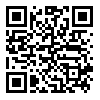<>
Volume 5, Issue 2 (Journal of Language Teaching, Literature & Linguistics (JLTLL) 2022)
JSAL 2022, 5(2): 93-111 |
Back to browse issues page
Download citation:
BibTeX | RIS | EndNote | Medlars | ProCite | Reference Manager | RefWorks
Send citation to:



BibTeX | RIS | EndNote | Medlars | ProCite | Reference Manager | RefWorks
Send citation to:
Asgharpour S, Asghari A. (2022). The effectiveness of the structure of the Quranic text and its semantic layers in translation; a case study of Surah Fatir [In Arabic]. JSAL. 5(2), 93-111.
URL: http://jsal.ierf.ir/article-1-37-en.html
URL: http://jsal.ierf.ir/article-1-37-en.html
1- Ph.D. student, Department of Arabic Language and Literature, Foreign Languages Campus, Isfahan University, Isfahan. Iran , s.asgharpour@fgn.ui.ac.ir
2- Master's student, Department of Translation, Faculty of Arts and Humanities, Shahid Madani University, Azerbaijan, Tabriz, Iran
2- Master's student, Department of Translation, Faculty of Arts and Humanities, Shahid Madani University, Azerbaijan, Tabriz, Iran
Abstract: (2359 Views)
The audience's perceptions of the text's meaning and author are influenced by its structure. The impact of a work is multiplied if it has a straightforward, logical structure combined with linguistic and moral aesthetics (eloquence and eloquence). Every text has a unique structure that gives it individuality and influences how literary the text is. Religious writings can be categorized in a number of structural directions. This essay examines the grammatical and rhetorical structures of Surah Fatir and how they manifest in its Persian translation using the descriptive-analytical technique. One of the causes of parallelism between source and destination texts is paying attention to grammatical and rhetorical tendencies. The translator has attempted to translate the verbal and conceptual complexities in accordance with the structure of the source text into the structure of the target text using the simplest expressions in an artistic manner and with respect for veracity. This has involved interacting with the grammatical and rhetorical structures used in the Surah. Furthermore, the desired performance of the translator is more closely linked to the transfer of grammatical than rhetorical components.
Keywords: Structuralism, Semantics, Translation, Grammatical Structure, Rhetorical Structure, Surah Fatir
Type of Study: Research |
Subject:
Sociolinguistics
Received: 2021/10/30 | Accepted: 2021/12/26 | Published: 2022/04/25
Received: 2021/10/30 | Accepted: 2021/12/26 | Published: 2022/04/25
Send email to the article author
| Rights and permissions | |
 |
This work is licensed under a Creative Commons Attribution-NonCommercial 4.0 International License. |






